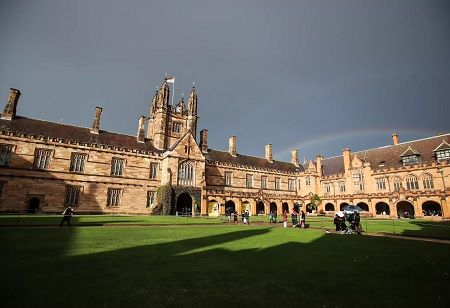- 69 percent of Australian universities dropped in the latest QS World University Rankings, with Melbourne, Sydney, and UNSW among the biggest fallers.
- Reputation hits and policy uncertainty, including staff cuts, visa reforms, and Trump-era U.S. scrutiny, have dented global perceptions.
- Rising competition from China, India, and New Zealand, backed by strong investments, signals the need for urgent reforms in Australia’s higher education sector.
Dozens of Australia’s leading universities have experienced significant declines in the latest QS World University Rankings, with 69 percent of its ranked institutions slipping down the list. The University of Melbourne fell seven places to 19th globally, the University of Sydney dropped from 18th to 25th, and UNSW slid to 20th. This is a particularly precipitous slump, with Australia experiencing the third-highest rate of decline only Austria and Russia experienced deeper falls.
The QS rankings are based on millions of research papers and survey replies from more than 127,000 academics in 1,501 institutions across 106 nations, evaluating reputation, research contribution, teaching, internationalisation, and sustainability. While Australian universities held up in citations per faculty and international engagement, the reputation of the sector academic and employer alike suffered, with 20 and 30 universities respectively losing places in these indicators.
Experts place the decline down to a range of contributory factors. Cost pressures, internal reorganisation, and staff turnover all linked to cost‑reduction measures have all adversely impacted on institutional reputations. Adding to the uncertainty have been mooted limits on overseas students and visa policy reforms enacted after 2023, which have cooled the nation's attractiveness for foreign scholars. Geopolitical tensions are also fuelling the crisis, various Australian research initiatives have been suspended temporarily by the U.S. during its continuing intelligence scrutiny, with universities even getting formal questionnaires associated with Trump-era policies.
Domestically, the controversy over the numbers of international students presented in part as a reaction to pressure on housing has further disquieted the sector. Industry voices, including the Coalition's shadow education minister, have termed the outcome as a warning that existing funding and policy approaches are not sufficient for a future-oriented higher education sector.
At the same time, institutions in China, India, and New Zealand have quickened their advance, supported by huge investments, heightening the competition. Though Australia still has nine universities in QS's top 100 and comes fifth internationally by percentage of institutions in that group, the message is unequivocal, complacency is no longer possible.
In the opinion of academic observers, these league tables are an eye-opener. In order to stay regionally relevant, Australian universities have to strengthen policy continuity, achieve stable research funding, and restore their international reputation. It is critical to ensure high-quality education and research within a competitive Asia‑Pacific context not just for the success of institutions but also for the wider economic productivity they underpin.

